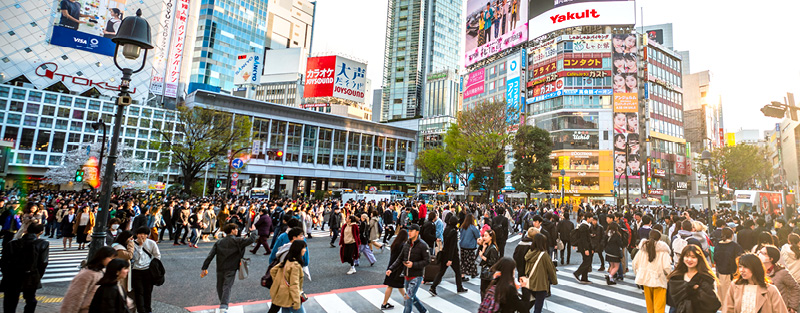Commentary
Time to visit Japan
December 1, 2022

With recession risk concerning many developed countries, it seems there is nowhere to hide. But actually, there is. Japan’s GDP is expected to grow 1.6% this year and 1.8% next year, according to the latest forecast of the Organization for Economic Co-operation and Development (OECD). In contrast, 2023 GDP growth in both the U.S. and the eurozone is expected to be only 0.5%.
We think the following reasons could explain such differences.
- Extremely loose monetary policy. The Bank of Japan maintained its key short-term interest rate at 0.1% and the 10-year bond yield around 0%.
- Supportive fiscal policy. An extra economic package of ¥29 trillion (US$208 billion) was recently announced, worth around 5% of GDP. The package aims to bring down inflation by 1.2% between January and September next year.
- Low inflation. Although Japan’s core CPI hit a 40-year high of 3.6% year over year in October, the pace of change was far slower than in the U.S. or Europe. Wage increases in September 2022 were up by only 2.1% on a year-over-year basis, contributing to Japan’s comparatively low rate of inflation.
- Reopening catch-up. Japan has lagged the U.S. and Europe in easing COVID policies. Face-to-face services resumed in March 2022, accelerating private consumption. Another boost for consumption came on October 11, 2022, when Japan lifted its border restrictions. In 2019, about 32 million foreign tourists visited Japan and spent a record high of ¥4.81 trillion. Pent-up demand should carry over into 2023.
- Automotive industry recovery. The manufacturing sector accounts for 20% of Japan’s total GDP, and automotive and ancillary manufacturing remain a substantial segment of that overall sector. As supply chain disruptions subside, automakers are expected to enhance production to fulfill record backlogs.
- Weak yen. The yen (JPY) has declined this year by more than 20% against the U.S. dollar, to a 32-year-low. In October, Japan’s exports were up 25.3% year over year, led by shipments of chips, electronic parts, and cars. For foreigners, a weak yen and low inflation mean that Japan is a relatively cheap shopping destination.
The Nikkei 225 Index has been whipsawed so far in 2022 and is currently -3% compared to January 1, 2022. Yet there are many positive stories to be found when you dig a little further into the numbers. Based on the September quarterly results of over 1,800 companies on the Tokyo Stock Exchange Prime Market, sales on aggregate are up by 21.9% year over year, operating profits are up by 9.2%, and net profit by 31.6%. Likewise, 64% of companies have reported sales higher than consensus estimates, according to Mizuho Securities.
We invest in a total of 20 Japanese companies in Global and EAFE Small Cap strategies. Below are some common themes from the management of these firms.
- All companies have benefited from the weak yen and/or reopening of the economy. Sales have been notably robust.
- Six of our holdings reported very strong results and raised their full-year sales guidance. These are:
- ASICS (7936.JP): a global sports goods maker best known for its performance running shoes.
- HORIBA (6856.JP): a global measurement equipment maker specializing in the analysis of small particles in the fields of semiconductors, environment, health and safety.
- Iwatani (8088.JP): a leading distributor of industrial and household gases in Japan.
- DMG MORI (6141.JP): the largest machine tool maker in the world.
- Seiren (3569.JP): a global leader in car seat materials.
- Kurita (6370.JP): the largest industrial water treatment company in Japan.
- Margin pressure remains a challenge: cost pass-on might be easier with time, but investment and spending are also rising.
- Supply chain issues are improving. Compared with western peers, our Japanese holdings have been more conservative in inventory management. They have kept a high raw material inventory to ease supply chain disruption. Long-term relationships with diversified suppliers also contribute to these supply chain improvements.
- Product prices continue to increase, though domestic increases are more difficult to impose than in overseas market.
- To our surprise, leaders of our Japanese holdings do not see pressure on wage increases from employees or the Japanese government. Nor are they experiencing a labour shortage issue.
- Reshoring is on the rise. Back in April 2020, Japan set aside a ¥243.5 billion fund to help manufacturers shift production out of China to avoid supply chain disruption. Recent U.S. restrictions on China to cripple its semiconductor industry should also help Japan attract more investment.
The MSCI Japan Small Cap Index is currently trading at a very attractive level, at 13x P/E. It is not only its lowest level in the past decade, but also lower than U.S. peers at 23x and European peers at 16x. We believe the fundamentals of the Japanese economy are still solid, with low inflation risk.







